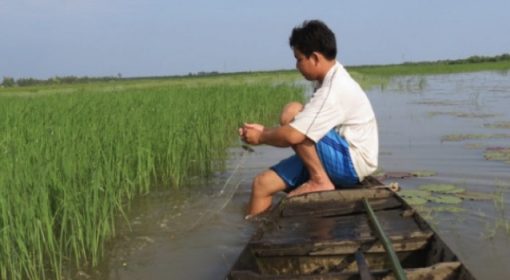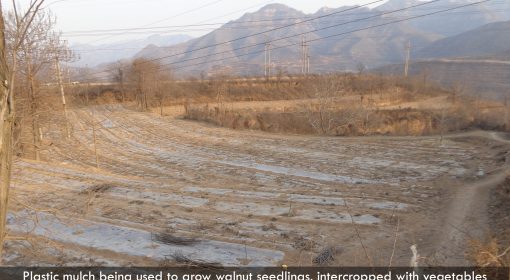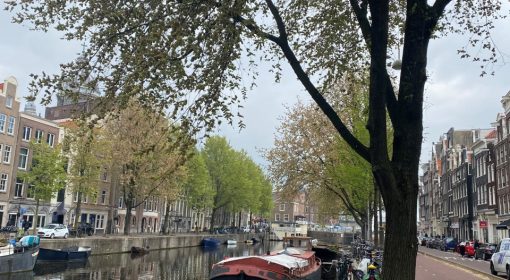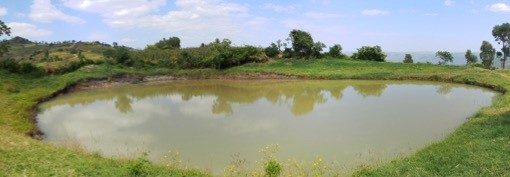by Frank van Steenbergen

Little pockets of air, moving upward in the water: bubbles. That is a technique that is now used to improve the quality of surface water. In the Westerdok in Amsterdam an experimental bubble barrier has been in place for almost five years. The barrier – essentially a perforated pipe venting air – is placed diagonally across the canal. It produces water bubbles that lift floating mini-bits of plastics in the water upwards. Across the canal, along the slanted line of bubbles formed by the barrier, the floating dirt is moved to the side. They are collected in a receptor from which they are removed. An electric compressor – operated with renewable energy and placed in a sounc-proofed container – supplies compressed air for the bubble barrier . The Westerdok bubble system has been successful, removing almost 200,000 particles, adding up to a ton of plastic, a year.
It is simplicity at its very best – no heavy installation, just a wall of millions of moving air drops. The bubbles gently remove micro-particles that are other wise hard to capture. At the same time navigation and water management in the canal is uninterrupted. Bubble barriers can also be used for other purposes – for instance in stopping salt water intrusion in canals, with the bubbles moving the heavier saline water upward from where it can be pushed back.
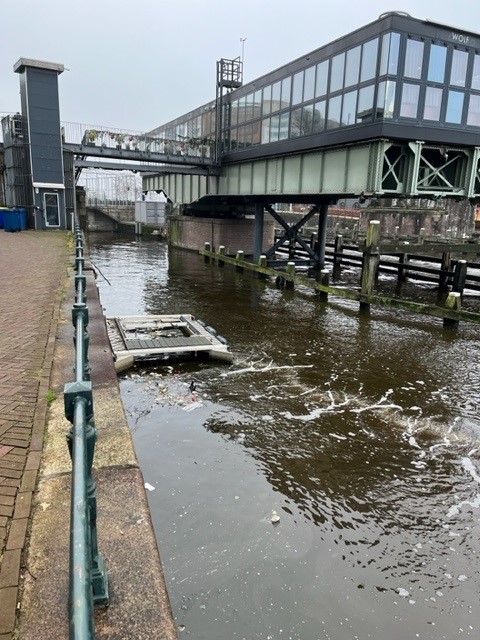
Let’s have more bubbles in our lives, to remove wrongs and worries, to lift them up and push them out of the way. Let’s have bubbles at major transitions – to move from one year to another, champagnes to renew and start a purer, dirt-free period.
